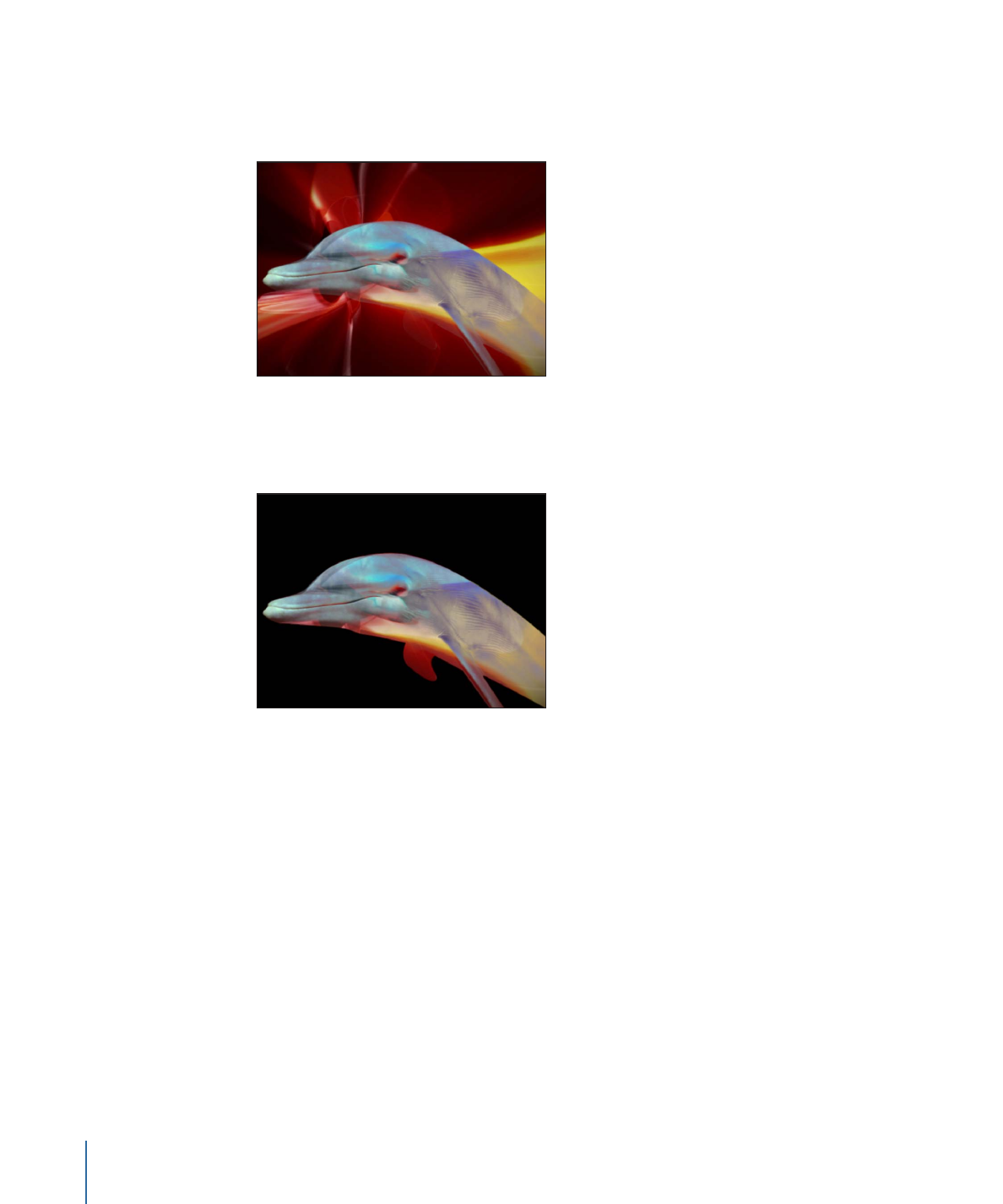
Using Blend Modes
Each blend mode presents a different method for combining two or more images together.
Blend modes work in addition to a layer’s alpha channel and opacity parameter.
To understand the descriptions of each blend mode in this chapter, it’s important to
understand that blend modes mix colors from overlapping images based on the brightness
values in each color channel in an image. Every image consists of red, green, blue, and
alpha channels. Each channel contains a range of brightness values that define the intensity
of each pixel in the image that uses some of the channel’s color.
290
Chapter 7
Basic Compositing

The effect that each blend mode has on overlapping layers depends on the range of color
values in each layer. The red, green, and blue channels in each overlapping pixel are
mathematically combined to yield the final image.
These value ranges can be described as blacks, midrange values, or whites. These regions
are loosely illustrated by the chart below.
Blacks
Whites
Midrange color values
For example, the Multiply blend mode renders color values that fall into the white areas
of an image transparent, while the black areas of the image are left alone. All midrange
color values become translucent, with colors in the lighter end of the scale becoming
more transparent than the colors in the darker end of the scale.